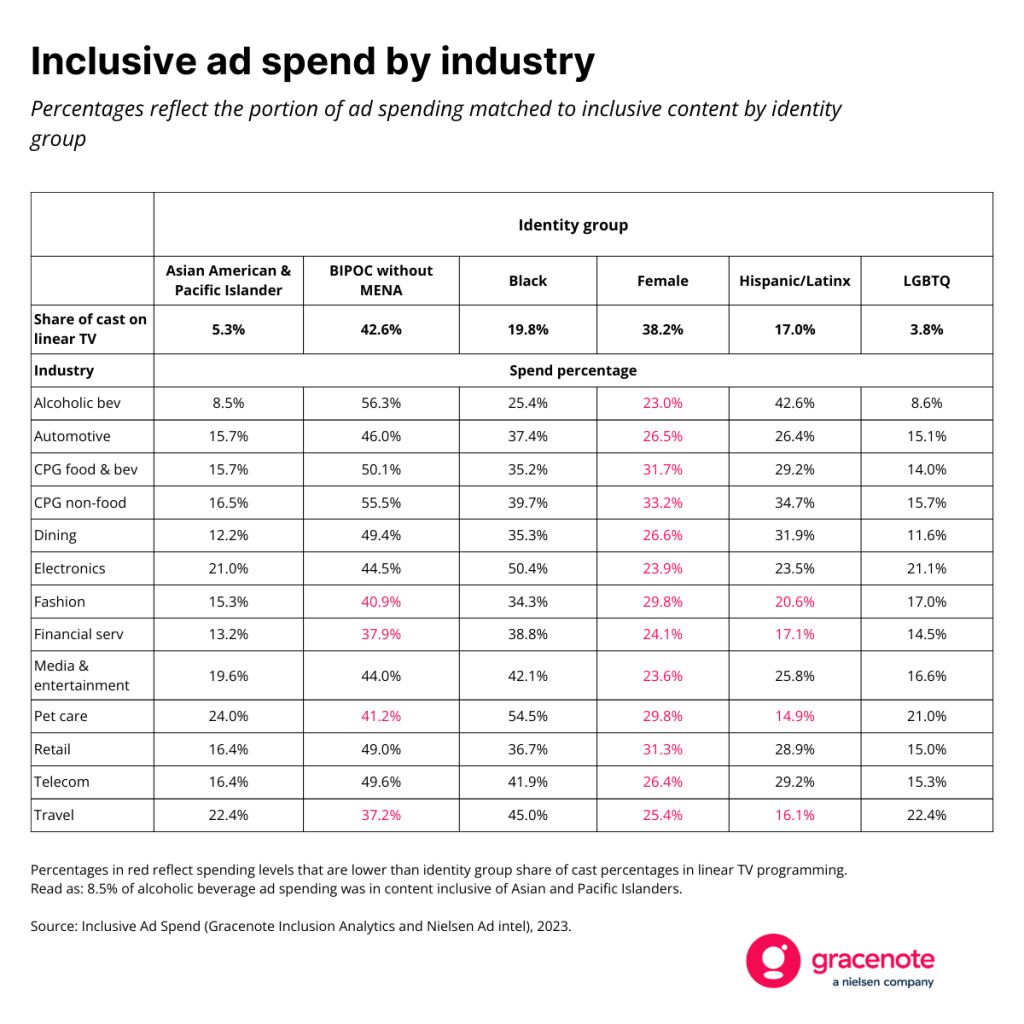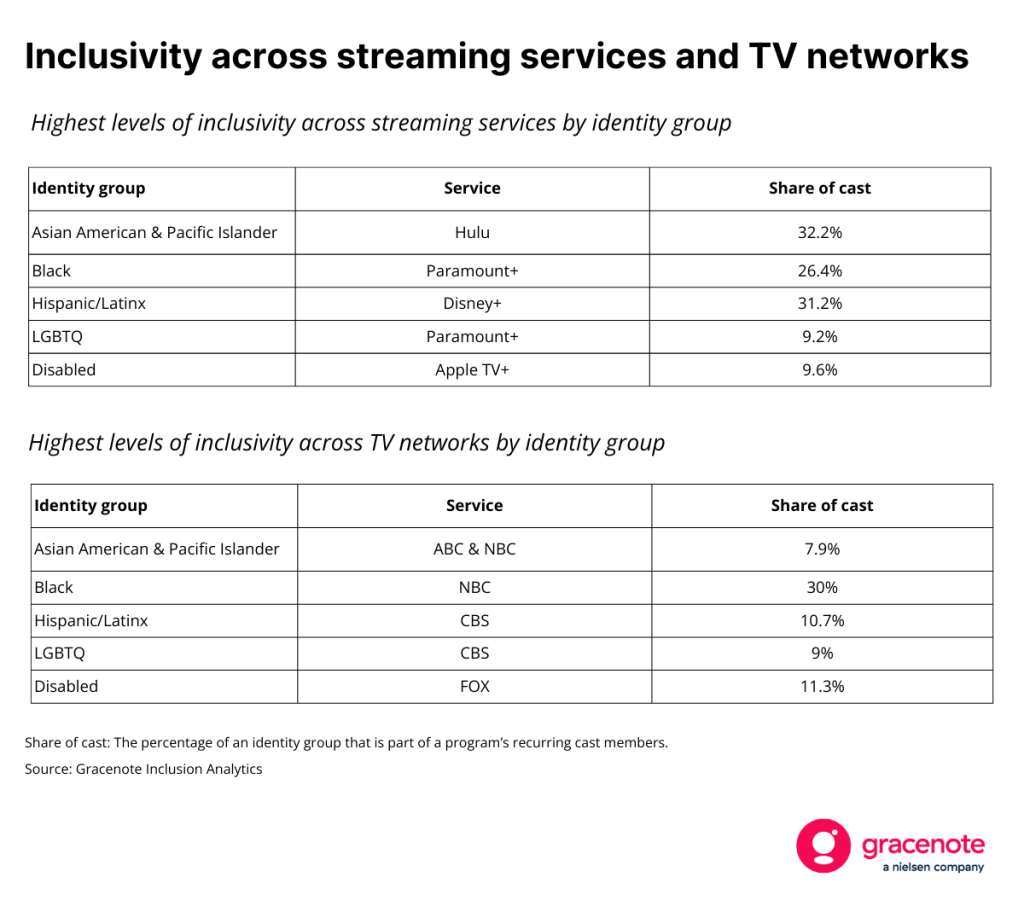In addition to attracting audiences, inclusive TV programming is a key consideration for media buyers. Yet despite the industry’s progress to be more inclusive and representative in content, advertising dollars haven’t kept pace.
While average inclusion levels in TV programming don’t change much year-over-year, new, original TV content is becoming increasingly diverse at the program level, as detailed in our recent Diverse by design report. Despite the new opportunities that these programs provide for media buyers looking to be more inclusive with their ad spending, the amount of inclusive programming largely outpaces brands’ investment in it.
To arrive at the findings for our most recent inclusive ad spend report, Gracenote analyzed $11 billion in spending allocated to linear TV programs in 2023 to identify how inclusive the spending was. At a high level, only 46% of spending was invested in racially/ethnic-inclusive content (i.e., BIPOC1). Percentages were lower for individual identity groups, including women. To be considered inclusive, the share of cast2 for individual groups needed to be at or above the U.S. population estimate for that group.
At a more granular level, the findings highlight areas of potential over- and under-investment across industries. The biggest takeaway is that all industries under-invest in content that‘s inclusive of women. The investment percentages in the table below are scaled to the share of cast for each identity group. Through the lens of U.S. population estimates, the under-investment in women-inclusive content would be much greater (per the U.S. Census, women account for approximately 51% of the U.S. population).

Inequitable ad spending is even greater at the brand level. Only 45% of brands, for example, spend equitably in content inclusive of the BIPOC community. That means that 55% of brands are not investing equitably in BIPOC-inclusive content. The biggest gap, however, pertains to investment in content that’s inclusive of women. In fact, only 2.4% of brands invested in content that’s inclusive of women. To be inclusive of women, the female share of cast percentage for a program needs to be at or above 51% (the U.S. Census’ population estimate for women).

Diverse-owned media plays a critical role for media buyers looking to engage with specific audiences, but the $1.9 billion in diverse-owned media spending3 last year fell far short of any level that would be representative of the increasing diversity of the U.S. population. That’s where the growing diversity of premium original content can help brands maximize their engagement and fulfill their commitments to diversity and inclusivity at scale.
When programming is both popular and diverse, it becomes both reflective of the broader society we live in and appealing from a media investment perspective.
Across networks and services, Gracenote Inclusion Analytics data shows us that the ones that feature the most representation for individual identity groups are also the ones that increased their inclusion of the groups on a year-over-year basis. Disney+, for example, increased its inclusion of Hispanic/Latinx talent by more than 103% year-over-year. Similarly, Hulu increased its inclusion of Asian and Pacific Islander talent in 2023 by 18.7%.

Advertisers play a huge role in shaping the inclusivity of the media landscape, and data can highlight ways for advertisers and agencies to be more inclusive with the 97.5% of media spending that is not allocated to diverse-owned companies4.
For additional insights, download our Diverse by design report on inclusive ad spending in popular TV programing.
Notes
- Black, indigenous and other people of color.
- The percentage of an identity group that is part of a program’s recurring cast members.
- Diverse-owned media ad spend research; AIMM in partnership with MAVEN and Media Framework (formerly Standard Media Index)
- The ANA’s Alliance for Inclusive Multicultural Marketing (AIMM).
How brands can tap into the growth of live sports on FAST channels
The ongoing addition of live sports to FAST channels is a notable opportunity for brands because of their real-time appeal with sports fans.
How contextual targeting can help marketers reach the scale they need in CTV to build their brands
By tapping into the visibility that contextual signals provide, brands can overcome their top challenges in CTV advertising and find the scale they’re looking for.
2025 Gracenote contextual targeting report
User-based targeting is great for delivering performance, but people don’t watch TV ads the way they watch ads on social media.